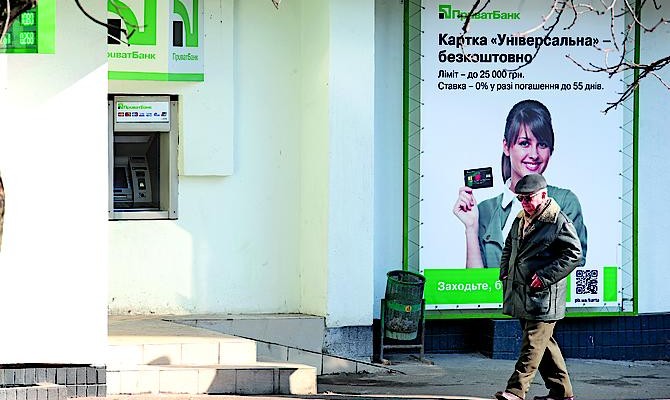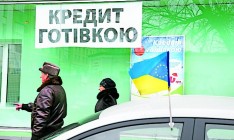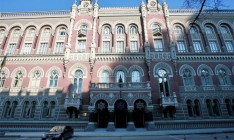Finance
banksUkrainian banks stopped lending money

The volumes of retail lending in the Ukrainian banking system have significantly declined since the beginning of the year. As of October 1 the volume of retail loans in the national currency was UAH 113.503 bn, whereas at the beginning of the year the amount was UAH 8.3 bn higher, according to the NBU. Among the largest banks the retail loan portfolio decreased in 13 of the 15 financial institutions.
Shortage of resources
Experts say that the decline in retail lending is directly associated with a number of factors. “The main reason for the sharp reduction in retail lending was the deterioration of liquidity indices and the financial status of the banks. Many financial institutions simply had nothing to lend,” said Project Manager at the Platy Piznishe Finance Company Yuriy Derevko. Indeed, over the three quarters of this year banks’ financial results notably deteriorated. In January–September the losses of banks amounted to UAH 10.6 bn, whereas over the nine months of last year they showed profits of UAH 1.7 bn, according to the NBU. The increase in expenses of financial institutions over nine months in 2014 exceeded profit growth by 10.8 percentage points, while based on the results of August this gap was only 8.3 percentage points. The reason lies in the increase in provisioning – in September deductions to reserves increased by UAH 8.8 bn to UAH 53.6 bn. Also, since the beginning of the year there has been a considerable outflow of personal deposits, which resulted in a shortage of liquidity of banks.
In addition, the complicated economic and social situation in the country, the rapid growth of the U.S. dollar exchange rate, rising unemployment, delayed payment of wages, rising prices and the troubled eastern region have caused deterioration of servicing of debts for existing loans, which increases the burden on the capital of banks. This, in turn, led to the freezing of loan programs. “Many banks set a credit ceiling, issuing loans only to the most transparent and loyal customers and some banks have stopped lending altogether,” said Head of the Retail Lending Department at the National Credit Bank Natalya Tarasenko.
The problem has the most severe impact on unsecured consumer portfolios, says Advisor to the Chairman of EuroBank Vasyl Nevmerzhytskiy. Devaluation of the hryvnia and the decline in purchasing power have thrown many people into a dilemma: to pay back loans or to provide their families with the bare necessities.
Covering losses
The problems with the servicing of bank loans, as well as an increase in arrears of individuals and legal entities – according to unofficial data it reaches 30% of the portfolio – reduced the amounts of interest earnings of banks. For some of them this index went in the red. For example, the net interest loss of Delta Bank as of October 1 was UAH 505 mn and the loss of Nadra Bank as of the same date was UAH 210 mn.
The banks partially try to compensate for the decrease in interest earnings by charging commission fees. However, in light of the general economic situation in the country it is quite difficult to substantially increase earnings other than from hard currency transactions, says Derevko. “It is even more difficult to replace the declining rates of interest earnings,” he says. The main article of commission income – cash management services – is becoming more expensive. “Rates are increasing. Over the past six months almost all banks have changed their price plans for many services. They revised the cost of cash management services and certain rates on card products,” said Nevmerzhytskiy. Some banks have also dramatically increased fees for payment with hryvnia cards abroad.
Hoping for a tax holiday
Bankers say that by the end of the year one should not expect a revival of retail lending. “The volume of the retail loan portfolio will remain roughly at the current levels, maybe with a slight adjustment to the downside. The high season will help banks maintain their current indicators. December is the most successful month for consumer loans,” predicts Derevko. At the same time, experts say that given the conflict in the Donbas and the annexation of Crimea there is no point in expecting major repayment of retail loans in those territories.
Real credit growth is only possible after stabilization of the situation in the country, confirms Tarasenko. She adds that stabilization of the exchange rate will enable people to plan their purchases, which will be expressed in constant demand for loans and banks, in turn, will not be afraid to lose the resources and will safely allocate the raised funds to long-term loans.

Кредитование на банковских условиях - просто безумие. До сих пор страдают граждане, которые оказались заложниками "кредитного бума", совпавшим, по понятным причинам, с "бумом недвижимости". Сейчас банки отнимают у таких жертв готовое жилье и совсем не по высокой цене (стоимость ремонта во внимание не принимается, хотя такая стоимость равна стоимости, как минимум, трети квартиры). Таких жертв, вдоволь накормивших аппетиты и застройщиков, и банков, и государства, просто выкидывают на улицу. Хотя присутствует информация о невыплатах кредитов самими застройщиками, которые умудрились завладеть деньгами и граждан и банков под залог одного строящегося объекта. Во взаимоотношениях с такими застройщиками у банка нет другого выхода, как договариваться на выгодных для застройщика условиях - большая часть денег безвозвратно оседает в кармане застройщика, а точнее его кукловода. На горе, попавших в пирамиду "строительного бума", новые застройщики строят новое жилье, раздувая очередной пузырь на рынке.






 of the agreement of syndication with Financial Times Limited are strictly prohibited. Use of materials which refers to France-Presse, Reuters, Interfax-Ukraine, Ukrainian News, UNIAN agencies is strictly prohibited. Materials marked
of the agreement of syndication with Financial Times Limited are strictly prohibited. Use of materials which refers to France-Presse, Reuters, Interfax-Ukraine, Ukrainian News, UNIAN agencies is strictly prohibited. Materials marked  are published as advertisements.
are published as advertisements.